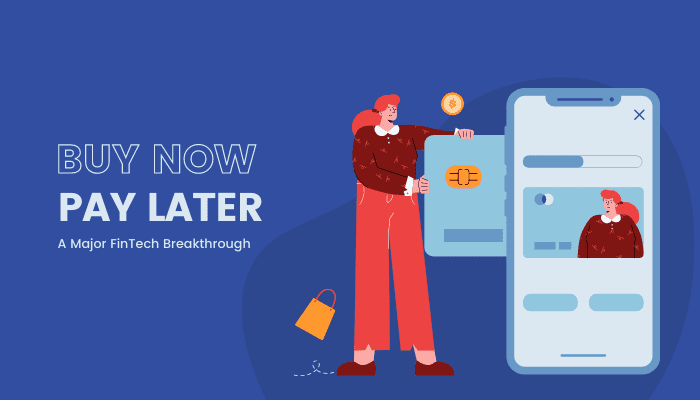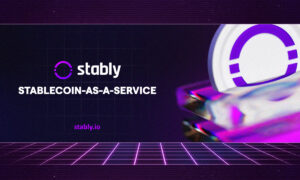Consumers and End Users are easily enticed by the fact that they may get credit right away with no questions asked. It is quite difficult to NOT like such easy credit access!
BNPL is now one of the most talked-about subjects – not just in the United States, but also in India. Here’s a little introduction to the term if you’re unfamiliar with it.
Consider this scenario: You’re looking for a new pair of shoes and come across a great pair for Rs. 2,000 on an e-Commerce app. However, it is a little too far out of your budget range. For a short spell, you ignore all restraints and put the shoes in your wish-list/shopping cart. But, the actual reality sets in quickly, and you begin to consider scrapping the purchase altogether.
The app then recommends a BNPL option, almost out of nowhere. You are not obligated to pay the Rs. 2,000 at this stage. You can settle the payment in the next month instead, with no added interest – “Buy Now, Pay Later”
It seems to be far too good to be true. But you buy the shoes anyway, and you’re left thinking, “Why on earth are they allowing you to buy anything straight away without even asking for a payment?”
So, here’s the deal –
BNPL is intended to make your costly expense seem more affordable. Imagine what would happen if you didn’t have this option. You would have dropped the idea of those shoes, and the e-commerce merchant would have missed out on a probable sale. Doesn’t sound too good, does it? So it’s difficult to say ‘NO’ when firms like Afterpay, Simpl, Ola Postpaid, Slice, or Lazypay (in India) provide a BNPL alternative.
After charging a teeny fee, these BNPL Firms will then pay the e-commerce merchant the remaining amount when you want to buy the shoes. Then they’ll come and get the money back from you the following week or month. However, they may impose a fine if you do not repay the credit on time, just like Credit Card repayments. But that’s all there is to it. This is how the BNPL companies make the majority of their money. While there is a chance that some of these customers may not repay, BNPL companies generally accept this risk. They are aware and absorb such blows to their profits and move forward.
BNPL is an easy-to-understand and comparatively handy product (when you compare them to credit cards). When it comes to credit cards, you would first apply and then hang around for its confirmation, which makes for quite a tedious process, no?
And, you don’t have to worry about your CIBIL Score either!
This is a great potential for e-commerce firms, food delivery apps, and other similar businesses to increase the volume of transactions. They can persuade you to make “subsequent purchases” and place greater orders. This way, when you buy or shop, there is minimal friction. It’s also an opportune chance for BNPL companies to make a few bucks. In fact, if they see you’re the type of client who pays on time, they could even allow you to move to higher-ticket financing with EMIs, etc.
That being stated, there are some risks to be aware of.
For one thing, many BNPL firms only manage minor transactions. And, to be honest, profits are abysmal there. Then there’s the fact that they accept those who don’t have a credit history as well. So if they can’t assess risks properly, things might turn messy.
More significantly, major retailers are now developing their own BNPL solutions in-house. As a result, stand-alone businesses may face stiff competition in the near future. However, the influence BNPL has had on consumer behavior, particularly in India, is evident.
In India, the number of individuals who have credit cards is quite low. They do, however, have big ambitions to live their lives as they see fit. Who doesn’t? And BNPL enterprises are aiding them in achieving this goal. In fact, they’re also pulling businesses away from traditional banks in the process.
How good of an option is it for you, as an end customer?
For you, it’s more about accessibility and credit availability. It’s a great tool for profitability and cash flow management if utilized carefully. However, if your convenience collides with excessive credit, the ominous red flag goes up. You must be cautious of two things: first, shop only if you have the funds available in your bank account, and second, always, without fail, repay back promptly.
What are some salty facts about BNPL Transactions?
Although you may want to use BNPL to manage your cash reserves, it may as well be misused to create a phony impression of affordability. You need to understand that your credit limit grows as you make on-time payments; this is how the algorithm operates. But this, by no means, can imply that the higher the limit, the higher would be your spending power. The latter is what you ought to mindfully track.
Countless BNPL payments in and out of too many e-commerce websites can not only result in a complicated situation for you but can also lead to you being in a lot of debt. And this credit will be relatively expensive, with interest rates ranging from 30% to 36% per annum.
Is there a way out?
Yes, there is! Keeping your personal limits lower than the one offered for your BNPL payments is one way to deter huge debts. For instance, you should always spend not more than 40% to 50% of your available credit and return at least a few days ahead of the payable date. Also, remember to read the terms and conditions regarding fines for delayed payments.
And, on a quick side note — If you are looking to buy any insurance policy in general, do talk to Ditto, a new age insurance advisory service that helps people better understand insurance.
You can book a free call on the website, get all your queries sorted, and even make a purchase if you wish. The website also comes with a spam-free guarantee and you won’t hear from them unless you absolutely want to.



































